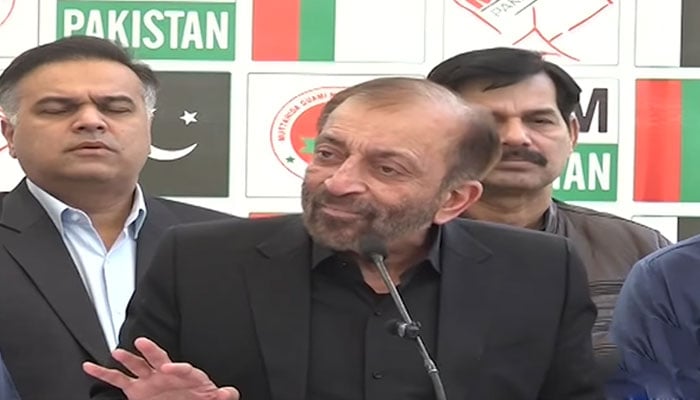okbet casino slot login
2025-01-13 2025 European Cup okbet casino slot login
News
 casino slots download free
casino slots download free
How Washington outsider Jimmy Carter wooed voters tired of Vietnam and WatergateJERUSALEM — A new round of Israeli airstrikes in Yemen on Thursday targeted the Houthi rebel-held capital and multiple ports, while the World Health Organization's director-general said the bombardment occurred nearby as he prepared to board a flight in Sanaa, with a crew member injured. "The air traffic control tower, the departure lounge — just a few meters from where we were — and the runway were damaged," Tedros Adhanom Ghebreyesus said on social media. He added that he and U.N. colleagues were safe. "We will need to wait for the damage to the airport to be repaired before we can leave," he said, without mentioning the source of the bombardment. U.N. spokesperson Stephanie Tremblay later said the injured person was with the U.N. Humanitarian Air Service. Israel's army later told The Associated Press it wasn't aware that the WHO chief or delegation were at the location in Yemen. Smoke rises Thursday from the area around the International Airport after an airstrike in Sanaa, Yemen. The Israeli strikes followed several days of Houthi launches setting off sirens in Israel. The Israeli military said in a statement it attacked infrastructure used by the Iran-backed Houthis at the international airport in Sanaa and ports in Hodeida, Al-Salif and Ras Qantib, along with power stations, claiming they were used to smuggle in Iranian weapons and for the entry of senior Iranian officials. Israel's military added it had "capabilities to strike very far from Israel's territory — precisely, powerfully, and repetitively." The strikes, carried out more than 1,000 miles from Jerusalem, came a day after Israeli Prime Minister Benjamin Netanyahu said "the Houthis, too, will learn what Hamas and Hezbollah and Assad's regime and others learned" as his military has battled those more powerful proxies of Iran. The Houthi-controlled satellite channel al-Masirah reported multiple deaths and showed broken windows, collapsed ceilings and a bloodstained floor and vehicle. Iran's foreign ministry condemned the strikes. The U.S. military also targeted the Houthis in recent days. The U.N. says the targeted ports are important entryways for humanitarian aid for Yemen, the poorest Arab nation that plunged into a civil war in 2014. Over the weekend, 16 people were wounded when a Houthi missile hit a playground in the Israeli city of Tel Aviv, while other missiles and drones were shot down. Last week, Israeli jets struck Sanaa and Hodeida, killing nine people, calling it a response to previous Houthi attacks. The Houthis also have been targeting shipping on the Red Sea corridor, calling it solidarity with Palestinians in Gaza. The U.N. Security Council has an emergency meeting Monday in response to an Israeli request that it condemn the Houthi attacks and Iran for supplying them weapons. Relatives and friends mourn over the bodies of five Palestinian journalists Thursday who were killed by an Israeli airstrike in Gaza City at the Al-Aqsa Hospital in Deir al-Balah. Meanwhile, an Israeli strike killed five Palestinian journalists outside a hospital in Gaza overnight, the territory's Health Ministry said. The strike hit a car outside Al-Awda Hospital in the built-up Nuseirat refugee camp in central Gaza. The journalists worked for local news outlet Al-Quds Today, a television channel affiliated with the Islamic Jihad militant group. Islamic Jihad is a smaller and more extreme ally of Hamas and took part in the Oct. 7, 2023, attack in southern Israel that ignited the war. Israel's military identified four of the men as combat propagandists and said that intelligence, including a list of Islamic Jihad operatives found by soldiers in Gaza, confirmed that all five were affiliated with the group. Associated Press footage showed the incinerated shell of a van, with press markings visible on the back doors. The Committee to Protect Journalists says more than 130 Palestinian reporters have been killed since the start of the war. Israel hasn't allowed foreign reporters to enter Gaza except on military embeds. Israel banned the pan-Arab Al Jazeera network and accuses six of its Gaza reporters of being militants. The Qatar-based broadcaster denies the allegations and accuses Israel of trying to silence its war coverage, which has focused heavily on civilian casualties from Israeli military operations. Mourners cry Thursday while they take the last look at the body of a relative, one of eight Palestinians killed, during their funeral in the West Bank city of Tulkarem. Separately, Israel's military said a 35-year-old reserve soldier was killed during fighting in central Gaza. A total of 389 soldiers have been killed in Gaza since the start of the ground operation. The war began when Hamas-led militants stormed across the border, killing around 1,200 people, mostly civilians, and abducting about 250. About 100 hostages are still inside Gaza, at least a third of whom are believed to be dead. Israel's air and ground offensive has killed more than 45,000 Palestinians, according to the Health Ministry. It says more than half the fatalities are women and children, but doesn't say how many of the dead were fighters. The offensive caused widespread destruction and hunger and drove around 90% of the population of 2.3 million from their homes. Hundreds of thousands are packed into squalid camps along the coast, with little protection from the cold, wet winter. Also Thursday, people mourned eight Palestinians killed by Israeli military operations in and around Tulkarem in the occupied West Bank on Tuesday, according to the Palestinian Health Ministry. The Israeli military said it opened fire after militants attacked soldiers, and it was aware of uninvolved civilians who were harmed in the raid. Respond: Write a letter to the editor | Write a guest opinion Subscribe to stay connected to Tucson. A subscription helps you access more of the local stories that keep you connected to the community. Be the first to know Get local news delivered to your inbox!
Carolina Panthers tight end Ja'Tavion Sanders was taken to a hospital for a neck injury after landing on his head while making a catch late in the first half of Sunday's 30-27 home loss to the Kansas City Chiefs. As Sanders was brought down near the sideline after a 10-yard reception, he was flipped upside down and landed directly on the top of his helmet as he went out of bounds on the tackle by cornerback Trent McDuffie. After receiving attention from the team's medical staff, Sanders was strapped to a backboard and taken off the field on a cart with 40 seconds remaining in the half. He was taken to Atrium Health Carolinas Medical Center in Charlotte for observation and later released Sunday afternoon, according to the team. On the CBS broadcast following halftime, Panthers head coach Dave Canales said Sanders had movement in all his extremities, while extreme precaution was taken because of back tightness. CBS reported he was being examined for a concussion before later amending that to a neck injury. The 21-year-old rookie out of Texas had a team-leading three receptions for the Panthers at the half for 49 yards. In 11 games this season, Sanders has 29 receptions for 302 yards and a touchdown. Sanders was a fourth-round selection in the NFL draft in April. --Field Level Media
Trump selects longtime adviser Keith Kellogg as special envoy for Ukraine and Russia
It looked like a recipe for disaster. So, when his country's swimmers were being accused of doping earlier this year, one Chinese official cooked up something fast. He blamed it on contaminated noodles. In fact, he argued, it could have been a culinary conspiracy concocted by criminals, whose actions led to the cooking wine used to prepare the noodles being laced with a banned heart drug that found its way into an athlete's system. This theory was spelled out to international anti-doping officials during a meeting and, after weeks of wrangling, finally made it into the thousands of pages of data handed over to the lawyer who investigated the case involving 23 Chinese swimmers who had tested positive for that same drug. The attorney, appointed by the World Anti-Doping Agency, refused to consider that scenario as he sifted through the evidence. In spelling out his reasoning, lawyer Eric Cottier paid heed to the half-baked nature of the theory. "The Investigator considers this scenario, which he has described in the conditional tense, to be possible, no less, no more," Cottier wrote. Even without the contaminated-noodles theory, Cottier found problems with the way WADA and the Chinese handled the case but ultimately determined WADA had acted reasonably in not appealing China's conclusion that its athletes had been inadvertently contaminated. Critics of the way the China case was handled can't help but wonder if a wider exploration of the noodle theory, details of which were discovered by The Associated Press via notes and emails from after the meeting where it was delivered, might have lent a different flavor to Cottier's conclusions. "There are more story twists to the ways the Chinese explain the TMZ case than a James Bond movie," said Rob Koehler, the director general of the advocacy group Global Athlete. "And all of it is complete fiction." In April, reporting from the New York Times and the German broadcaster ARD revealed that the 23 Chinese swimmers had tested positive for the banned heart medication trimetazidine, also known as TMZ. China's anti-doping agency determined the athletes had been contaminated, and so, did not sanction them. WADA accepted that explanation, did not press the case further, and China was never made to deliver a public notice about the "no-fault findings," as is often seen in similar cases. The stock explanation for the contamination was that traces of TMZ were found in the kitchen of a hotel where the swimmers were staying. In his 58-page report, Cottier relayed some suspicions about the feasibility of that chain of events — noting that WADA's chief scientist "saw no other solution than to accept it, even if he continued to have doubts about the reality of contamination as described by the Chinese authorities." But without evidence to support pursuing the case, and with the chance of winning an appeal at almost nil, Cottier determined WADA's "decision not to appeal appears indisputably reasonable." A mystery remained: How did those traces of TMZ get into the kitchen? Shortly after the doping positives were revealed, the Institute of National Anti-Doping Organizations held a meeting on April 30 where it heard from the leader of China's agency, Li Zhiquan. Li's presentation was mostly filled with the same talking points that have been delivered throughout the saga — that the positive tests resulted from contamination from the kitchen. But he expanded on one way the kitchen might have become contaminated, harkening to another case in China involving a low-level TMZ positive. A pharmaceutical factory, he explained, had used industrial alcohol in the distillation process for producing TMZ. The industrial alcohol laced with the drug "then entered the market through illegal channels," he said. The alcohol "was re-used by the perpetrators to process and produce cooking wine, which is an important seasoning used locally to make beef noodles," Li said. "The contaminated beef noodles were consumed by that athlete, resulting in an extremely low concentration of TMZ in the positive sample. "The wrongdoers involved have been brought to justice." This new information raised eyebrows among the anti-doping leaders listening to Li's report. So much so that over the next month, several emails ensued to make sure the details about the noodles and wine made their way to WADA lawyers, who could then pass it onto Cottier. Eventually, Li did pass on the information to WADA general counsel Ross Wenzel and, just to be sure, one of the anti-doping leaders forwarded it, as well, according to the emails seen by the AP. All this came with Li's request that the noodles story be kept confidential. Turns out, it made it into Cottier's report, though he took the information with a grain of salt. "Indeed, giving it more attention would have required it to be documented, then scientifically verified and validated," he wrote. Neither Wenzel nor officials at the Chinese anti-doping agency returned messages from AP asking about the noodles conspiracy and the other athlete who Li suggested had been contaminated by them. Meanwhile, 11 of the swimmers who originally tested positive competed at the Paris Games earlier this year in a meet held under the cloud of the Chinese doping case. Though WADA considers the case closed, Koehler and others point to situations like this as one of many reasons that an investigation by someone other than Cottier, who was hired by WADA, is still needed. "It gives the appearance that people are just making things up as they go along on this, and hoping the story just goes away," Koehler said. "Which clearly it has not." Be the first to know Get local news delivered to your inbox!
Agora, Inc. Reports Third Quarter 2024 Financial Results
It was no different for Jimmy Carter in the early 1970s. It took meeting several presidential candidates and then encouragement from an esteemed elder statesman before the young governor, who had never met a president himself, saw himself as something bigger. He announced his White House bid on December 12 1974, amid fallout from the Vietnam War and the resignation of Richard Nixon. Then he leveraged his unknown, and politically untainted, status to become the 39th president. That whirlwind path has been a model, explicit and otherwise, for would-be contenders ever since. “Jimmy Carter’s example absolutely created a 50-year window of people saying, ‘Why not me?’” said Steve Schale, who worked on President Barack Obama’s campaigns and is a long-time supporter of President Joe Biden. Mr Carter’s journey to high office began in Plains, Georgia where he received end-of-life care decades after serving as president. David Axelrod, who helped to engineer Mr Obama’s four-year ascent from state senator to the Oval Office, said Mr Carter’s model is about more than how his grassroots strategy turned the Iowa caucuses and New Hampshire primary into his springboard. “There was a moral stain on the country, and this was a guy of deep faith,” Mr Axelrod said. “He seemed like a fresh start, and I think he understood that he could offer something different that might be able to meet the moment.” Donna Brazile, who managed Democrat Al Gore’s 2000 presidential campaign, got her start on Mr Carter’s two national campaigns. “In 1976, it was just Jimmy Carter’s time,” she said. Of course, the seeds of his presidential run sprouted even before Mr Nixon won a second term and certainly before his resignation in August 1974. In Mr Carter’s telling, he did not run for governor in 1966, he lost, or in 1970 thinking about Washington. Even when he announced his presidential bid, neither he nor those closest to him were completely confident. “President of what?” his mother, Lillian, replied when he told her his plans. But soon after he became governor in 1971, Mr Carter’s team envisioned him as a national player. They were encouraged in part by the May 31 Time magazine cover depicting Mr Carter alongside the headline “Dixie Whistles a Different Tune”. Inside, a flattering profile framed Mr Carter as a model “New South” governor. In October 1971, Carter ally Dr Peter Bourne, an Atlanta physician who would become US drug tsar, sent his politician friend an unsolicited memo outlining how he could be elected president. On October 17, a wider circle of advisers sat with Mr Carter at the Governor’s Mansion to discuss it. Mr Carter, then 47, wore blue jeans and a T-shirt, according to biographer Jonathan Alter. The team, including Mr Carter’s wife Rosalynn, who died aged 96 in November 2023, began considering the idea seriously. “We never used the word ‘president’,” Mr Carter recalled upon his 90th birthday, “but just referred to national office”. Mr Carter invited high-profile Democrats and Washington players who were running or considering running in 1972, to one-on-one meetings at the mansion. He jumped at the chance to lead the Democratic National Committee’s national campaign that year. The position allowed him to travel the country helping candidates up and down the ballot. Along the way, he was among the Southern governors who angled to be George McGovern’s running mate. Mr Alter said Mr Carter was never seriously considered. Still, Mr Carter got to know, among others, former vice president Hubert Humphrey and senators Henry Jackson of Washington, Eugene McCarthy of Maine and Mr McGovern of South Dakota, the eventual nominee who lost a landslide to Mr Nixon. Mr Carter later explained he had previously defined the nation’s highest office by its occupants immortalised by monuments. “For the first time,” Mr Carter told The New York Times, “I started comparing my own experiences and knowledge of government with the candidates, not against ‘the presidency’ and not against Thomas Jefferson and George Washington. It made it a whole lot easier”. Adviser Hamilton Jordan crafted a detailed campaign plan calling for matching Mr Carter’s outsider, good-government credentials to voters’ general disillusionment, even before Watergate. But the team still spoke and wrote in code, as if the “higher office” were not obvious. It was reported during his campaign that Mr Carter told family members around Christmas 1972 that he would run in 1976. Mr Carter later wrote in a memoir that a visit from former secretary of state Dean Rusk in early 1973 affirmed his leanings. During another private confab in Atlanta, Mr Rusk told Mr Carter plainly: “Governor, I think you should run for president in 1976.” That, Mr Carter wrote, “removed our remaining doubts.” Mr Schale said the process is not always so involved. “These are intensely competitive people already,” he said of governors, senators and others in high office. “If you’re wired in that capacity, it’s hard to step away from it.” “Jimmy Carter showed us that you can go from a no-name to president in the span of 18 or 24 months,” said Jared Leopold, a top aide in Washington governor Jay Inslee’s unsuccessful bid for Democrats’ 2020 nomination. “For people deciding whether to get in, it’s a real inspiration,” Mr Leopold continued, “and that’s a real success of American democracy”.It looked like a recipe for disaster. So, when his country's swimmers were being accused of doping earlier this year, one Chinese official cooked up something fast. He blamed it on contaminated noodles. In fact, he argued, it could have been a culinary conspiracy concocted by criminals, whose actions led to the cooking wine used to prepare the noodles being laced with a banned heart drug that found its way into an athlete's system. This theory was spelled out to international anti-doping officials during a meeting and, after weeks of wrangling, finally made it into the thousands of pages of data handed over to the lawyer who investigated the case involving 23 Chinese swimmers who had tested positive for that same drug. The attorney, appointed by the World Anti-Doping Agency, refused to consider that scenario as he sifted through the evidence. In spelling out his reasoning, lawyer Eric Cottier paid heed to the half-baked nature of the theory. "The Investigator considers this scenario, which he has described in the conditional tense, to be possible, no less, no more," Cottier wrote. Even without the contaminated-noodles theory, Cottier found problems with the way WADA and the Chinese handled the case but ultimately determined WADA had acted reasonably in not appealing China's conclusion that its athletes had been inadvertently contaminated. Critics of the way the China case was handled can't help but wonder if a wider exploration of the noodle theory, details of which were discovered by The Associated Press via notes and emails from after the meeting where it was delivered, might have lent a different flavor to Cottier's conclusions. "There are more story twists to the ways the Chinese explain the TMZ case than a James Bond movie," said Rob Koehler, the director general of the advocacy group Global Athlete. "And all of it is complete fiction." In April, reporting from the New York Times and the German broadcaster ARD revealed that the 23 Chinese swimmers had tested positive for the banned heart medication trimetazidine, also known as TMZ. China's anti-doping agency determined the athletes had been contaminated, and so, did not sanction them. WADA accepted that explanation, did not press the case further, and China was never made to deliver a public notice about the "no-fault findings," as is often seen in similar cases. The stock explanation for the contamination was that traces of TMZ were found in the kitchen of a hotel where the swimmers were staying. In his 58-page report, Cottier relayed some suspicions about the feasibility of that chain of events — noting that WADA's chief scientist "saw no other solution than to accept it, even if he continued to have doubts about the reality of contamination as described by the Chinese authorities." But without evidence to support pursuing the case, and with the chance of winning an appeal at almost nil, Cottier determined WADA's "decision not to appeal appears indisputably reasonable." A mystery remained: How did those traces of TMZ get into the kitchen? Shortly after the doping positives were revealed, the Institute of National Anti-Doping Organizations held a meeting on April 30 where it heard from the leader of China's agency, Li Zhiquan. Li's presentation was mostly filled with the same talking points that have been delivered throughout the saga — that the positive tests resulted from contamination from the kitchen. But he expanded on one way the kitchen might have become contaminated, harkening to another case in China involving a low-level TMZ positive. A pharmaceutical factory, he explained, had used industrial alcohol in the distillation process for producing TMZ. The industrial alcohol laced with the drug "then entered the market through illegal channels," he said. The alcohol "was re-used by the perpetrators to process and produce cooking wine, which is an important seasoning used locally to make beef noodles," Li said. "The contaminated beef noodles were consumed by that athlete, resulting in an extremely low concentration of TMZ in the positive sample. "The wrongdoers involved have been brought to justice." This new information raised eyebrows among the anti-doping leaders listening to Li's report. So much so that over the next month, several emails ensued to make sure the details about the noodles and wine made their way to WADA lawyers, who could then pass it onto Cottier. Eventually, Li did pass on the information to WADA general counsel Ross Wenzel and, just to be sure, one of the anti-doping leaders forwarded it, as well, according to the emails seen by the AP. All this came with Li's request that the noodles story be kept confidential. Turns out, it made it into Cottier's report, though he took the information with a grain of salt. "Indeed, giving it more attention would have required it to be documented, then scientifically verified and validated," he wrote. Neither Wenzel nor officials at the Chinese anti-doping agency returned messages from AP asking about the noodles conspiracy and the other athlete who Li suggested had been contaminated by them. Meanwhile, 11 of the swimmers who originally tested positive competed at the Paris Games earlier this year in a meet held under the cloud of the Chinese doping case. Though WADA considers the case closed, Koehler and others point to situations like this as one of many reasons that an investigation by someone other than Cottier, who was hired by WADA, is still needed. "It gives the appearance that people are just making things up as they go along on this, and hoping the story just goes away," Koehler said. "Which clearly it has not." Get local news delivered to your inbox!
'113 years of voluntary labour': Meet CFA life member Russell WilliamsWho Are Jimmy Carter's Children? He Leaves Behind 3 Sons and a Daughter
PHILADELPHIA (AP) — Tanner McKee’s first career NFL touchdown pass was thrown to a Philadelphia Eagles fan named Patrick. OK, McKee actually threw the 20-yard TD to Pro Bowl wide receiver A.J Brown, who — in a momentary lapse of reason — chucked the souvenir football into the Lincoln Financial field stands. Uh-oh. “I felt so bad,” Brown said, “because I threw it so far.” McKee, a sixth-round pick out of Stanford in 2023, is a career third-string QB who had never played a regular-season snap until he was pressed into emergency duty Sunday against Dallas. Jalen Hurts did not start because of a concussion and Kenny Pickett — who ran and threw for a TD in the Eagles' 41-7 win — was knocked of the game with injured ribs. That opened the door for the 24-year-old McKee to play in a game in which the Eagles clinched the NFC East. He did his part — including the 20-yard strike in the third that made it 34-7. The celebration was temporarily muted when he realized his ball — a milestone keepsake for any player — was somewhere in the stands. Little did McKee know the ball was coming back to him. Eagles fans kicked off a bit of a relay with the ball once they realized its significance to McKee. The fan who caught the ball was promised a jersey from Brown. He sent the ball to one fan, who passed it to Eagles security chief “Big” Dom DiSandro to hand to another Eagles employee to Brown and finally to McKee. Souvenir secured. “I appreciate whoever gave the ball back,” McKee said. “(Brown) was like, ‘I’m sorry, bro. I got the ball back.’ So, yeah, it was good. He made a great play, and obviously a great catch.” It was Brown's throw that needed work. Brown stripped off and signed his game jersey and handed it to a fan named Patrick as a thank-you for returning the football — all while fans chanted “E-A-G-L-E-S!” around him. “We've got great fans here,” Brown said. McKee needed more room on the trophy shelf — he threw a second TD pass in the fourth quarter. AP NFL: https://apnews.com/NFLFormer Oregon State Beavers’ star activated by the Dallas CowboysNone
Memphis beats No. 2 UConn 99-97 in overtime to tip off Maui Invitational LAHAINA, Hawaii (AP) — Tyrese Hunter scored 17 of his 26 points after halftime to lead Memphis to a 99-97 overtime win against two-time defending national champion and second-ranked UConn in the first round of the Maui Invitational. Hunter shot 7 of 10 from 3-point range for the Tigers, who were 12 of 22 from beyond at the arc as a team. PJ Haggerty had 22 points and five assists, Colby Rogers had 19 points and Dain Dainja scored 14. Tarris Reed Jr. had 22 points and 11 rebounds off the bench for the Huskies. Alex Karaban had 19 points and six assists, and Jaylin Stewart scored 16. Javascript is required for you to be able to read premium content. Please enable it in your browser settings. Get updates and player profiles ahead of Friday's high school games, plus a recap Saturday with stories, photos, video Frequency: Seasonal Twice a weekITV I'm A Celebrity fans demand one thing as unlikely friendship blossoms in camp
Center Tomas Hertl makes his first visit to the SAP Center since being traded last season when the Pacific Division-leading Vegas Golden Knights visit the San Jose Sharks on Friday. Hertl was the 17th overall pick of the 2012 NHL Draft by San Jose and in 11 seasons collected 218 goals and 484 points -- the sixth-most in franchise history. San Jose dealt him to the Golden Knights ahead of the trade deadline in March. A video tribute will be played to commemorate his return. "I'm excited for it," said Hertl, 31. "I can't really tell how the feeling (will be) right now. We are going to be on other side in the visiting team (locker room). "We had some great runs. I played there a long time, but I still want to take the two points from there and have a good game. ... I really don't know what to expect because I haven't been in this situation before in my life." Hertl has 10 goals, including a team-high seven on the power play, and 24 points for Vegas. He scored the team's go-ahead goal and had an assist in the team's last game before the holiday break, a 3-1 home victory over the Anaheim Ducks on Monday. The Golden Knights went into the break with an NHL-best .721 points percentage thanks in part to an 8-1-0 mark in December. The team brings a four-game winning streak with it to San Jose and is 25-2-5 all-time in the regular season against the Sharks, including 12-0-3 in San Jose. The Golden Knights are 19-3-2 against Western Conference teams and 11-2-1 against Pacific Division rivals. "Right now in the (Western Conference) I certainly feel we're going as well as anybody, and that's a credit to the guys," Vegas coach Bruce Cassidy said. San Jose is last the Pacific with 28 points, 21 fewer than the Golden Knights, and has lost five in a row since winning 4-3 at St. Louis on Dec. 12. Four of those losses were by one goal, including an overtime loss at defending Western Conference champion Edmonton, 3-2 last Saturday. The Sharks are coming off a 4-3 loss at Vancouver on Monday, when they surrendered three goals in the span of 70 seconds late in the second period to fall behind 4-1. "Today was four or five minutes, and we lose a hockey game because of it," San Jose coach Ryan Warsofsky said Monday. "So, it's frustrating. I feel for the guys because I thought we had a good effort tonight. We competed, we pushed back, but we have to learn from it and move on. ... We got to find some mental toughness to push through and stick together and do things and clamp it down and keep it simple." San Jose's six-game homestand begins with a back-to-back against the Golden Knights and Calgary Flames. The Sharks are 6-9-1 at home this season but will be facing a Vegas team that is 9-5-3 on the road. This is the second of three meetings between the two teams. Vegas won the first one 7-3 on Oct. 26 in Las Vegas behind one goal and two assists apiece from Mark Stone and Pavel Dorofeyev. --Field Level Media
Most Americans, from both parties, say the government needs to increase the supply of affordable housing. For President-elect Donald Trump, that should offer a good opportunity to summon his instincts for development — and self-promotion — to get America building again. Call it the “Trump Building Boom.” The problem is clear: For more than a decade, housing construction has failed to keep up with U.S. population growth and household formation. This has helped drive a nearly 50 percent increase in the median sales price of houses and a similar jump in rents, outstripping an 18 percent gain in real median household income. The income required to afford a new single-family home is now almost twice what it was five years ago, and nearly half of renting households spend more than 30 percent of their income on rent. By some measures, homelessness is at a record level. Normally, rising prices should spur construction, and there are signs that is starting to happen. But why not faster? For one thing, in many of the cities with the most severe housing shortages, local zoning restrictions, land-use regulations, rent controls, affordable-housing mandates and permitting requirements — among other burdens — limit development. Sustained attention to complex problems does not come naturally to Trump. But as a second-generation real estate developer, he has had plenty of personal experience with the bureaucratic obstacles and political opposition that housing plans often encounter. This might offer him an advantage in helping the U.S. build the estimated 2.5 million homes the country needs. Success would depend on three things. First, the administration should encourage a wave of rezoning and deregulation at state and local levels, which is the source of most of the friction. In his first term, Trump promised an effort along these lines and established a council to study the problem. This time around, he should act on its recommendations, including by helping local governments dial back costly requirements such as parking minimums and minimum lot sizes and speed up permitting. Perhaps the “freedom cities” Trump says he wants to build on federal land (details TBD) might be exemplars in this regard. More prosaically, the administration should change federal policies that needlessly raise the cost of construction. This could include reducing certain tariffs — such as those on Canadian lumber, which were sharply increased during the Biden administration — as well as expediting environmental reviews and reducing red tape. To help address the 288,000 job openings in construction, up from an average of 190,000 since 2000, Trump could create incentives for community colleges and vocational schools to provide relevant training and offer more visas for qualified immigrants. Finally, Trump has promised to reduce interest rates, which would certainly help make housing more affordable. The problem is that many of his policies would tend to make that job much harder. Here the president should try to be pragmatic. A commitment to respect the Federal Reserve’s independence would cost him little but help a lot. So might a pledge to cut spending and to moderate the many tax cuts he has talked about. Trump’s record suggests that any such compromise is a long shot. Then again, if there’s one consistency in Trump’s career, it’s that he defies expectations. Providing an ample supply of housing — and making life more affordable — should be a goal of every policymaker. Trump will arrive in office with an opportunity to achieve that goal. “Build, baby, build,” you might say. — Bloomberg NewsNone
 30 jili slot casino
WEST PALM BEACH, Fla. (AP) — An online spat between factions of Donald Trump's supporters over immigration and the tech industry has thrown internal divisions in his political movement into public display, previewing the fissures and contradictory views his coalition could bring to the White House. The rift laid bare the tensions between the newest flank of Trump's movement — wealthy members of the tech world including billionaire Elon Musk and fellow entrepreneur Vivek Ramaswamy and their call for more highly skilled workers in their industry — and people in Trump's Make America Great Again base who championed his hardline immigration policies. The debate touched off this week when Laura Loomer , a right-wing provocateur with a history of racist and conspiratorial comments, criticized Trump’s selection of Sriram Krishnan as an adviser on artificial intelligence policy in his coming administration. Krishnan favors the ability to bring more skilled immigrants into the U.S. Loomer declared the stance to be “not America First policy” and said the tech executives who have aligned themselves with Trump were doing so to enrich themselves. Much of the debate played out on the social media network X, which Musk owns. Loomer's comments sparked a back-and-forth with venture capitalist and former PayPal executive David Sacks , whom Trump has tapped to be the “White House A.I. & Crypto Czar." Musk and Ramaswamy, whom Trump has tasked with finding ways to cut the federal government , weighed in, defending the tech industry's need to bring in foreign workers. It bloomed into a larger debate with more figures from the hard-right weighing in about the need to hire U.S. workers, whether values in American culture can produce the best engineers, free speech on the internet, the newfound influence tech figures have in Trump's world and what his political movement stands for. Trump has not yet weighed in on the rift. His presidential transition team did not respond to questions about positions on visas for highly skilled workers or the debate between his supporters online. Instead, his team instead sent a link to a post on X by longtime adviser and immigration hard-liner Stephen Miller that was a transcript of a speech Trump gave in 2020 at Mount Rushmore in which he praised figures and moments from American history. Musk, the world's richest man who has grown remarkably close to the president-elect , was a central figure in the debate, not only for his stature in Trump's movement but his stance on the tech industry's hiring of foreign workers. Technology companies say H-1B visas for skilled workers, used by software engineers and others in the tech industry, are critical for hard-to-fill positions. But critics have said they undercut U.S. citizens who could take those jobs. Some on the right have called for the program to be eliminated, not expanded. Born in South Africa, Musk was once on an a H-1B visa himself and defended the industry's need to bring in foreign workers. “There is a permanent shortage of excellent engineering talent," he said in a post. “It is the fundamental limiting factor in Silicon Valley.” Trump's own positions over the years have reflected the divide in his movement. His tough immigration policies, including his pledge for a mass deportation, were central to his winning presidential campaign. He has focused on immigrants who come into the U.S. illegally but he has also sought curbs on legal immigration , including family-based visas. As a presidential candidate in 2016, Trump called the H-1B visa program “very bad” and “unfair” for U.S. workers. After he became president, Trump in 2017 issued a “Buy American and Hire American” executive order , which directed Cabinet members to suggest changes to ensure H-1B visas were awarded to the highest-paid or most-skilled applicants to protect American workers. Trump's businesses, however, have hired foreign workers, including waiters and cooks at his Mar-a-Lago club , and his social media company behind his Truth Social app has used the the H-1B program for highly skilled workers. During his 2024 campaign for president, as he made immigration his signature issue, Trump said immigrants in the country illegally are “poisoning the blood of our country" and promised to carry out the largest deportation operation in U.S. history. But in a sharp departure from his usual alarmist message around immigration generally, Trump told a podcast this year that he wants to give automatic green cards to foreign students who graduate from U.S. colleges. “I think you should get automatically, as part of your diploma, a green card to be able to stay in this country," he told the “All-In" podcast with people from the venture capital and technology world. Those comments came on the cusp of Trump's budding alliance with tech industry figures, but he did not make the idea a regular part of his campaign message or detail any plans to pursue such changes.
30 jili slot casino
WEST PALM BEACH, Fla. (AP) — An online spat between factions of Donald Trump's supporters over immigration and the tech industry has thrown internal divisions in his political movement into public display, previewing the fissures and contradictory views his coalition could bring to the White House. The rift laid bare the tensions between the newest flank of Trump's movement — wealthy members of the tech world including billionaire Elon Musk and fellow entrepreneur Vivek Ramaswamy and their call for more highly skilled workers in their industry — and people in Trump's Make America Great Again base who championed his hardline immigration policies. The debate touched off this week when Laura Loomer , a right-wing provocateur with a history of racist and conspiratorial comments, criticized Trump’s selection of Sriram Krishnan as an adviser on artificial intelligence policy in his coming administration. Krishnan favors the ability to bring more skilled immigrants into the U.S. Loomer declared the stance to be “not America First policy” and said the tech executives who have aligned themselves with Trump were doing so to enrich themselves. Much of the debate played out on the social media network X, which Musk owns. Loomer's comments sparked a back-and-forth with venture capitalist and former PayPal executive David Sacks , whom Trump has tapped to be the “White House A.I. & Crypto Czar." Musk and Ramaswamy, whom Trump has tasked with finding ways to cut the federal government , weighed in, defending the tech industry's need to bring in foreign workers. It bloomed into a larger debate with more figures from the hard-right weighing in about the need to hire U.S. workers, whether values in American culture can produce the best engineers, free speech on the internet, the newfound influence tech figures have in Trump's world and what his political movement stands for. Trump has not yet weighed in on the rift. His presidential transition team did not respond to questions about positions on visas for highly skilled workers or the debate between his supporters online. Instead, his team instead sent a link to a post on X by longtime adviser and immigration hard-liner Stephen Miller that was a transcript of a speech Trump gave in 2020 at Mount Rushmore in which he praised figures and moments from American history. Musk, the world's richest man who has grown remarkably close to the president-elect , was a central figure in the debate, not only for his stature in Trump's movement but his stance on the tech industry's hiring of foreign workers. Technology companies say H-1B visas for skilled workers, used by software engineers and others in the tech industry, are critical for hard-to-fill positions. But critics have said they undercut U.S. citizens who could take those jobs. Some on the right have called for the program to be eliminated, not expanded. Born in South Africa, Musk was once on an a H-1B visa himself and defended the industry's need to bring in foreign workers. “There is a permanent shortage of excellent engineering talent," he said in a post. “It is the fundamental limiting factor in Silicon Valley.” Trump's own positions over the years have reflected the divide in his movement. His tough immigration policies, including his pledge for a mass deportation, were central to his winning presidential campaign. He has focused on immigrants who come into the U.S. illegally but he has also sought curbs on legal immigration , including family-based visas. As a presidential candidate in 2016, Trump called the H-1B visa program “very bad” and “unfair” for U.S. workers. After he became president, Trump in 2017 issued a “Buy American and Hire American” executive order , which directed Cabinet members to suggest changes to ensure H-1B visas were awarded to the highest-paid or most-skilled applicants to protect American workers. Trump's businesses, however, have hired foreign workers, including waiters and cooks at his Mar-a-Lago club , and his social media company behind his Truth Social app has used the the H-1B program for highly skilled workers. During his 2024 campaign for president, as he made immigration his signature issue, Trump said immigrants in the country illegally are “poisoning the blood of our country" and promised to carry out the largest deportation operation in U.S. history. But in a sharp departure from his usual alarmist message around immigration generally, Trump told a podcast this year that he wants to give automatic green cards to foreign students who graduate from U.S. colleges. “I think you should get automatically, as part of your diploma, a green card to be able to stay in this country," he told the “All-In" podcast with people from the venture capital and technology world. Those comments came on the cusp of Trump's budding alliance with tech industry figures, but he did not make the idea a regular part of his campaign message or detail any plans to pursue such changes.


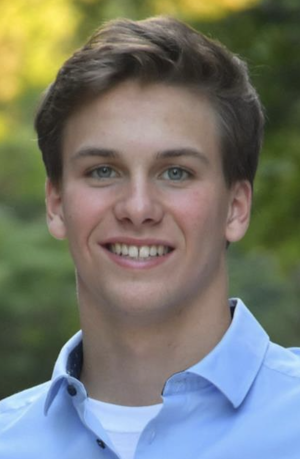



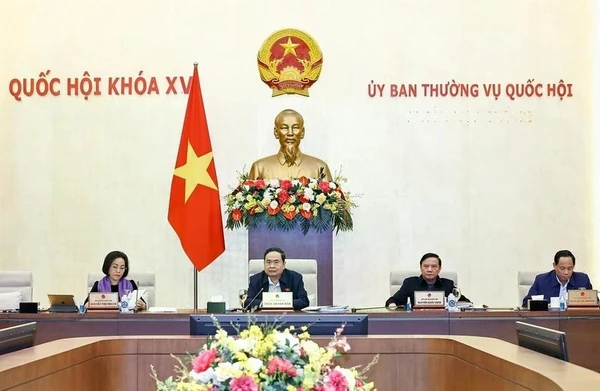








 casino slot 888
casino slot 888
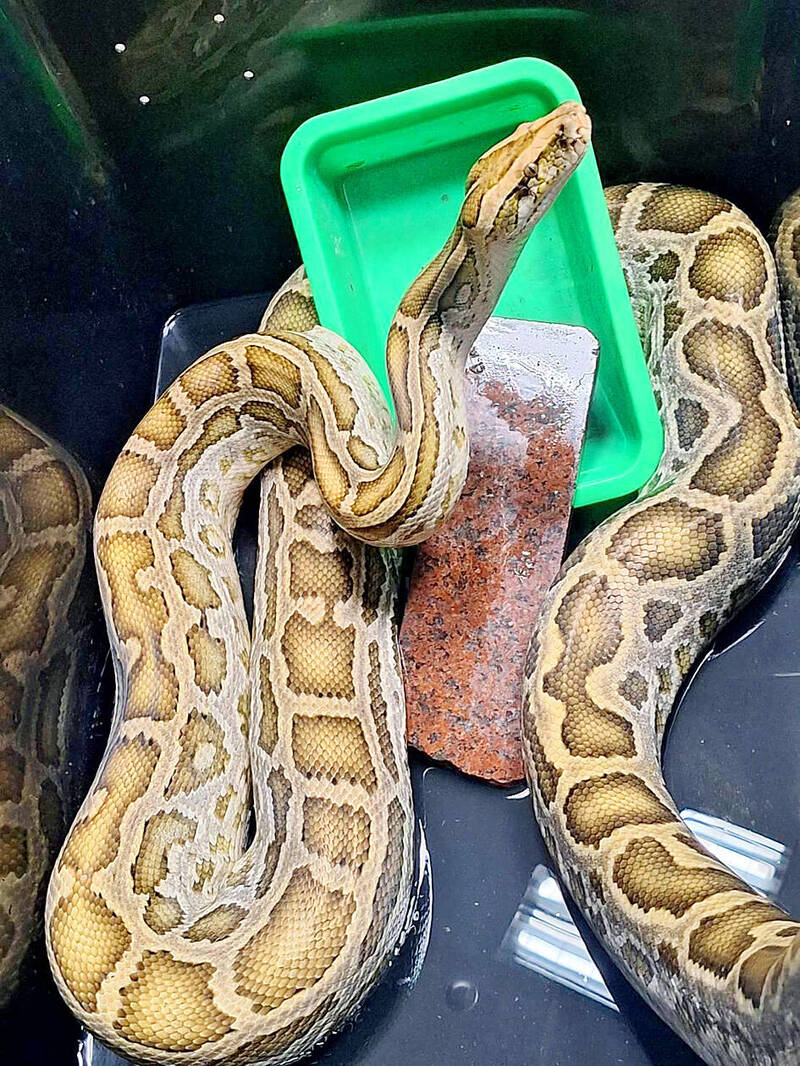




 casino slot background
casino slot background
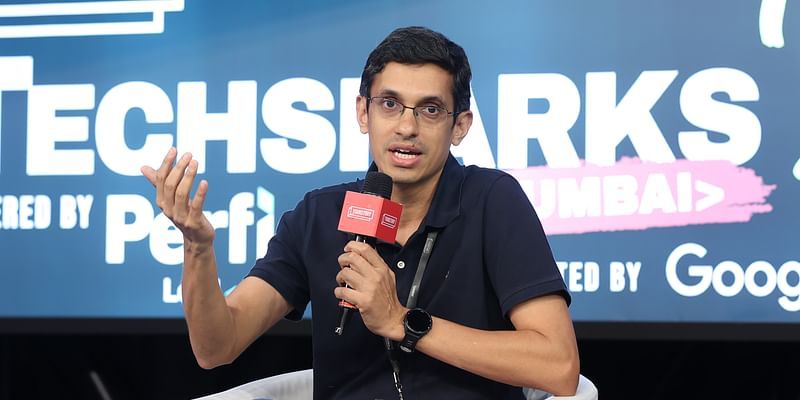



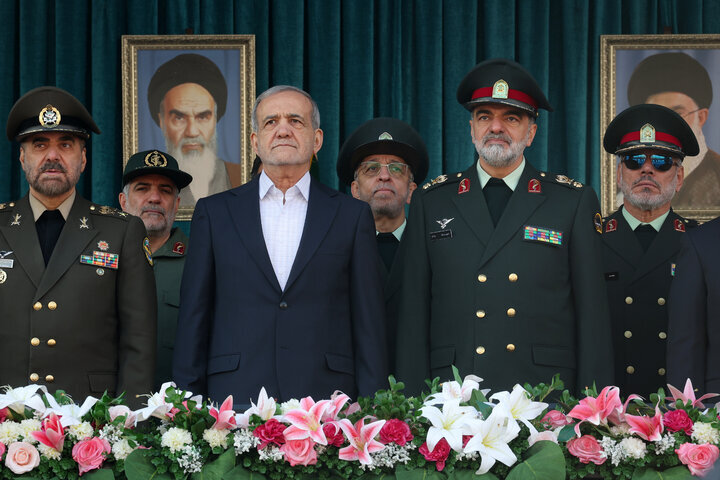
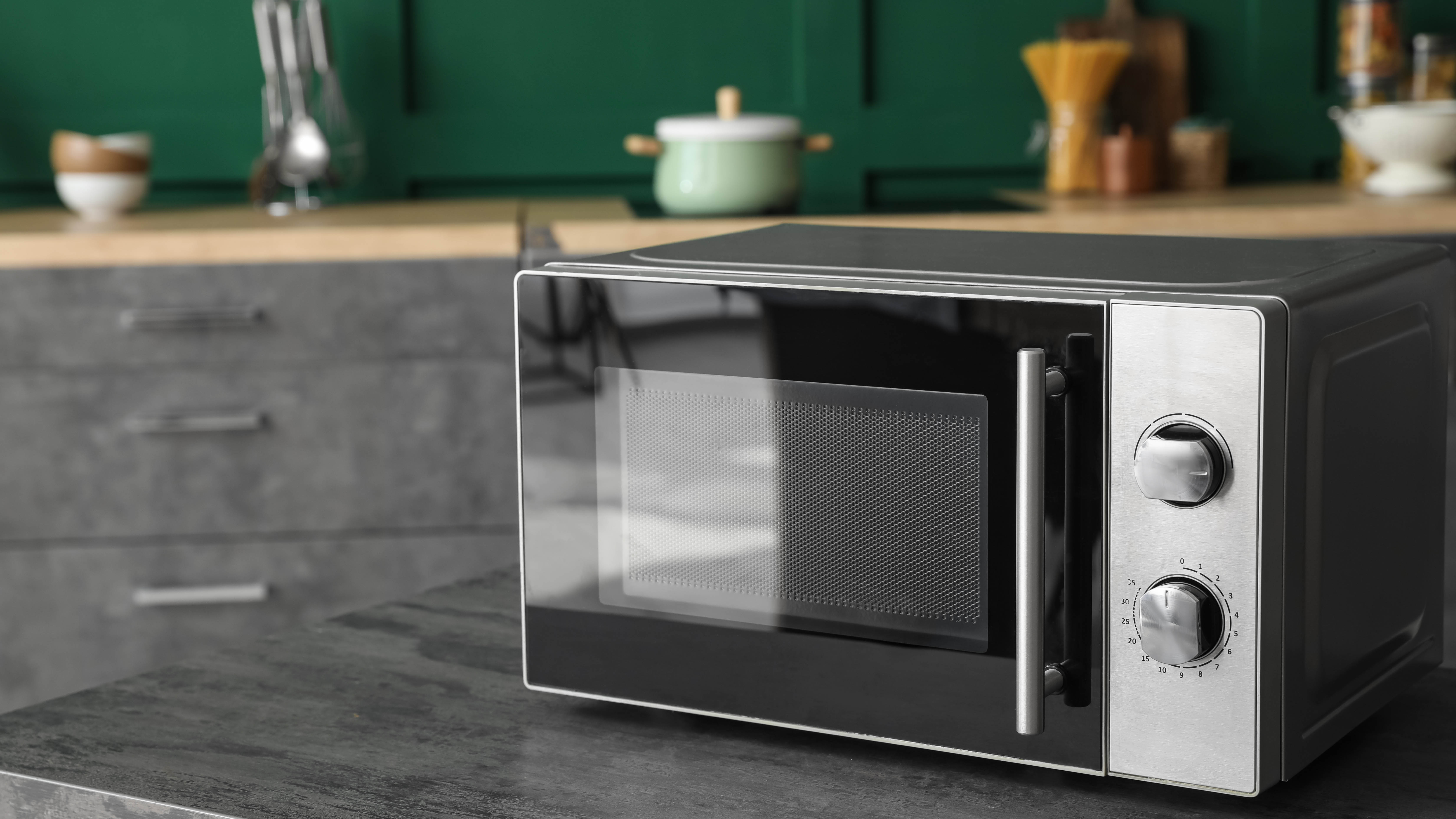 casino slot pagcor
casino slot pagcor




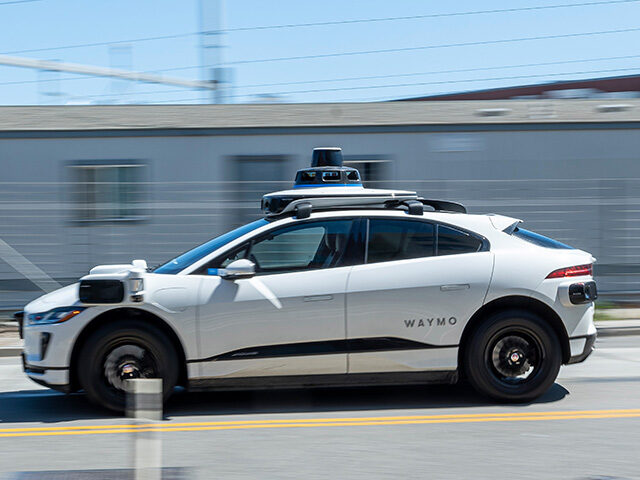
 casino slots download free
casino slots download free



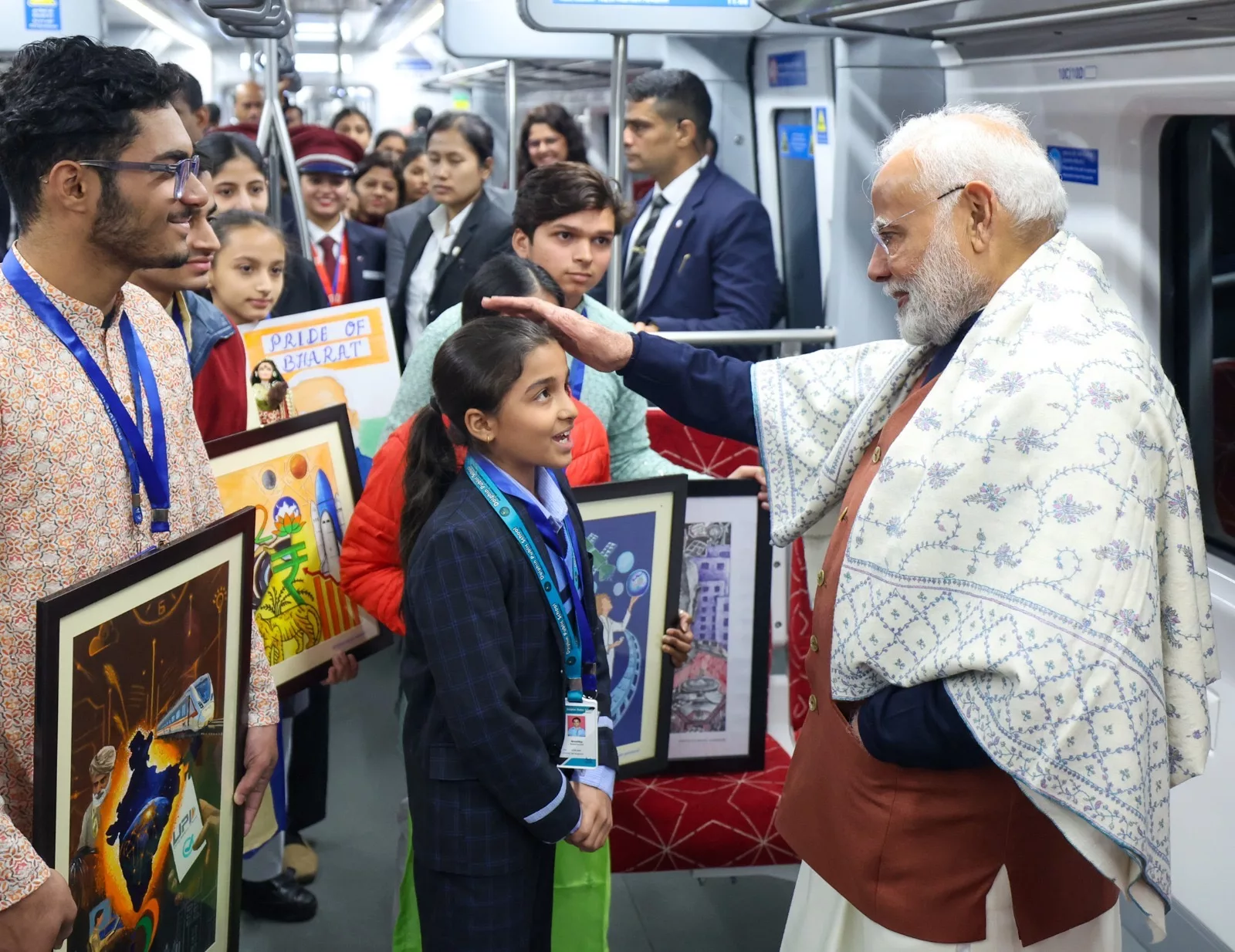

 casino slots las vegas
casino slots las vegas




